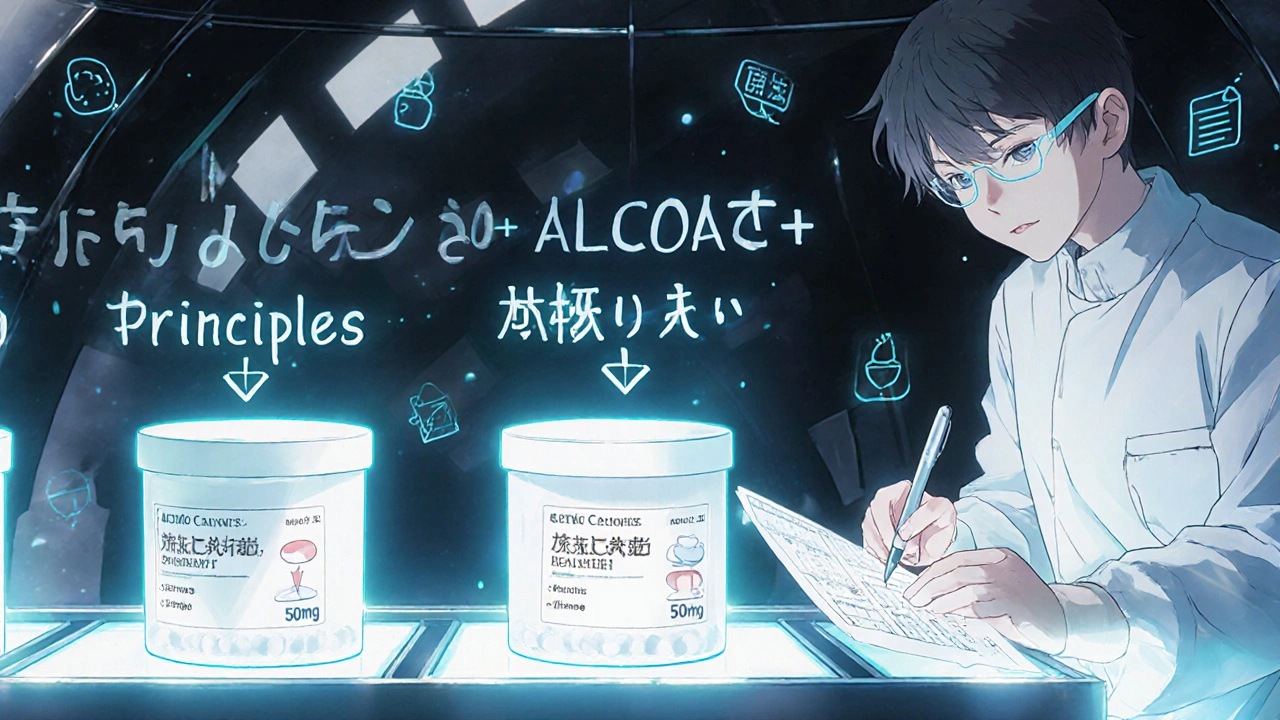The U.S. Food and Drug Administration doesn't just approve generic drugs - it builds quality into every step of how they're made. Unlike some people assume, generic drugs aren't cheaper because they're lower quality. They're cheaper because manufacturers don't repeat expensive clinical trials. But the FDA makes sure they work just as well, and are made just as safely, as brand-name drugs. This isn't luck. It's a system built over decades, with strict rules, surprise inspections, and data-driven oversight.
Why the FDA Doesn't Trust Final Product Testing Alone
In the 1960s, the FDA tested nearly 5,000 drugs and found that about 8% didn't deliver the right amount of medicine. Some had too much - risking overdose. Others had too little - meaning they didn't work. That discovery changed everything. Instead of just testing the finished pill at the end, the FDA realized: quality has to be built in from the start. That’s how Current Good Manufacturing Practices, or cGMP, became the foundation. cGMP isn’t a checklist. It’s a mindset. Every step of making a drug - from the first powder to the final box - must be controlled, documented, and verified. The FDA doesn’t wait for a batch to fail. They design systems that make failure nearly impossible.The Five Pillars of FDA Quality Control
There are five non-negotiable areas the FDA watches closely. If any one fails, the entire facility risks shutdown.- Control of Materials: Every ingredient, even the smallest one, must be tracked from source to final product. The FDA checks supplier records, tests raw materials, and requires unique batch codes. No guessing. No shortcuts. If a chemical comes from India, China, or the U.S., it’s held to the same standard.
- Production and Process Controls: Every machine setting, mixing time, temperature, and pressure is written down. If a mixer runs 10 seconds too long, it’s recorded. If a sensor reads off-spec, the batch is quarantined. There’s no room for "we’ve always done it this way."
- Quality Control and Laboratory Testing: Every batch is tested - not just for strength, but for purity, dissolution rate, and stability. Testing methods must be validated. Records must follow ALCOA+: Attributable, Legible, Contemporaneous, Original, Accurate, Complete, Consistent, Enduring, Available. If a lab tech writes on a sticky note and later transfers it to a computer, that’s a violation.
- Packaging and Labeling: A pill labeled "50 mg" must be 50 mg. No more. No less. Labels must match the drug exactly. Mislabeling a blood pressure pill as a painkiller? That’s a federal offense.
- Documentation and Record Keeping: Everything is recorded. Every shift. Every calibration. Every deviation. These records aren’t for show - they’re the FDA’s evidence during inspections. If you can’t prove it happened, it didn’t.
How the FDA Checks Compliance - Without Warning
The FDA doesn’t call ahead. Inspectors show up unannounced at over 1,200 facilities worldwide each year. About 1,700 factories make generic drugs for the U.S. market - and all of them are fair game. These inspections can last days or weeks. Inspectors review logs, interview staff, tour clean rooms, and even check trash bins for discarded documents. They don’t just look at paperwork. They watch how people work. Do technicians wash their hands before handling ingredients? Are machines cleaned properly between batches? Is data entered in real time, or backfilled? In 2022, 42% of FDA Form 483 observations - the official notice of violations - were about data integrity. That’s the number one problem. Foreign facilities are inspected more often now. In 2021, 17% of foreign plants had cGMP violations compared to 8% of U.S. ones. But even with more inspections, the FDA still can’t cover every site every year. That’s why they use risk-based targeting: if a company changed its supplier, added a new machine, or had a past violation, they’re more likely to get visited next.
The ANDA Process: Three Batches, One Goal
To get approval, a generic drug maker must submit an Abbreviated New Drug Application (ANDA). But here’s the twist: they can’t just send one batch. They must submit three separate batches of the same drug - each made differently. One batch is used for the most common strength. The other two are used for the lowest and highest strengths. Why? Because if a drug works at 10 mg, it must work at 20 mg and 5 mg too. The manufacturing process can’t break down when scaled up or down. This forces manufacturers to prove their process is robust - not just lucky. The review process takes 12 to 24 months. That’s long, but it’s not because the FDA is slow. It’s because they’re thorough. They check chemistry, manufacturing, labeling, and stability data. If anything is unclear, they send a request for more information. Many companies go through two or three rounds before approval.Costs, Challenges, and Real-World Impact
Meeting FDA standards isn’t cheap. New manufacturers spend $2 million to $5 million just on quality systems before submitting their first application. Training staff alone can take 18 to 24 months. Documentation eats up 30-40% of development time for smaller companies. But the payoff? 90% of all prescriptions in the U.S. are filled with generics. That’s 6.8 billion pills a year. And 98-99% of them work just like the brand-name version. Patients get the same medicine for 80-85% less. Without FDA oversight, that trust wouldn’t exist. Some manufacturers complain. One executive told Pharmaceutical Technology that the paperwork is overwhelming. But most admit it works. An industry survey found 82% of generic makers believe FDA rules improve product quality - even if they make things harder.
What’s Next? Real-Time Testing and Supply Chain Transparency
The FDA isn’t standing still. In 2023, they launched the Drug Quality Reporting System (DQRS), making it easier for companies to report problems. They’re also using more remote inspections - 35% of 2022 inspections were partly done online. The biggest change coming? Continuous manufacturing. Instead of making a drug in big batches over weeks, new factories will produce it continuously, like a conveyor belt. This reduces errors and allows real-time quality checks - meaning a bad batch is caught before it’s even finished. By 2025, new rules will require full traceability of active ingredients. If your pill contains a chemical from China, the FDA will know exactly which factory made it, when, and under what conditions. No more hidden suppliers.Is the System Perfect?
No system is. The FDA still struggles with staffing. The Government Accountability Office found resource limits affect how often inspections happen. Some experts worry too much relies on companies reporting their own mistakes. But here’s what matters: patients are safe. Millions take generics every day. They don’t get sick because the medicine is fake or weak. That’s not an accident. It’s the result of a system designed to catch problems before they reach you - not after. The FDA doesn’t guarantee perfection. But it guarantees process. And in medicine, that’s everything.Are generic drugs really as effective as brand-name drugs?
Yes. The FDA requires generic drugs to be bioequivalent to their brand-name counterparts - meaning they deliver the same amount of active ingredient at the same rate into the bloodstream. Studies show 98-99% of generics perform identically in the body. The only differences are in inactive ingredients like color or shape, which don’t affect how the drug works.
Does the FDA inspect foreign drug factories too?
Yes. The FDA inspects about 1,700 manufacturing facilities worldwide that supply generic drugs to the U.S. In 2023, over 1,200 inspections were conducted, with nearly half taking place outside the U.S. Foreign plants are inspected more frequently now, especially if they’ve had past violations or produce high-risk medications like injectables or antibiotics.
Why does the FDA require three batches for approval?
The three-batch requirement proves the manufacturing process works consistently across different strengths. One batch is used for the most common dosage, while the other two test the lowest and highest strengths. If the process can’t reliably produce all versions, the drug won’t be approved. This prevents situations where a pill works at one strength but fails at another.
What is ALCOA+ and why does it matter?
ALCOA+ stands for Attributable, Legible, Contemporaneous, Original, Accurate, Complete, Consistent, Enduring, and Available. It’s the standard for all data recorded during drug manufacturing. If a lab result isn’t written down at the time it’s taken, or if it’s erased and rewritten, it’s a violation. This prevents fraud, errors, and cover-ups. Over 40% of FDA inspection findings in 2022 were about data integrity issues.
How often does the FDA shut down a generic drug factory?
The FDA doesn’t shut down factories on the first violation. But if serious, repeated cGMP failures are found - like falsified records, contamination, or lack of quality controls - the agency can issue a warning letter, block imports, or even seek a court order to stop production. In 2022, several facilities were temporarily barred from exporting drugs to the U.S. due to unresolved violations.
